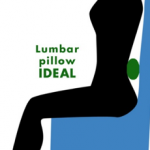Can you believe we’re nearing the end of another year already?! We hope that you have enjoyed the year and are looking forward to a nice break!

For those of you who are travelling over the festive season, whether it be by plane or in the car, we have put some tips on how to minimise the stress and strain on the body during a long journey.
Traveling can be rough on the body. Whether you are traveling alone, on business or on your way to a sunny resort with your family, long hours in a car or on an airplane can leave you stressed, tired, stiff and sore.
Prolonged sitting can wreak havoc on your body! Even if you travel in the most comfortable car or opt to fly first class, certain pressures and forces from awkward positions can result in restricted blood flow. One of the biggest insults to your system from prolonged sitting is the build-up of pressure in the blood vessels in your lower legs. Contracting and relaxing the muscles helps the blood flow properly.
We suggest the following tips to alleviate the aches and strains of travel:
Warm Up, Cool Down
Treat travel like an athletic event. Warm up before settling into a car or plane, and cool down once you reach your destination. Take a brisk walk to stretch your hamstring and calf muscles.
In an Aeroplane: 
. Stand up straight and feel the normal “S” curve of your spine. Then use rolled-up pillows or blankets to maintain that curve when you sit in your seat. Tuck a pillow behind your back and just above the beltline and lay another pillow across the gap between your neck and the headrest. If the seat is hollowed from wear, use folded blankets to raise your buttocks a little. Also make use of travel neck pillows to prevent you from straining your neck if you drift off.
. Check all bags heavier than 5 to 10 percent of your body weight. Overhead lifting of any significant amount of weight should be avoided to reduce the risk of pain in the lower back or neck. While lifting your bags, stand right in front of the overhead compartment so the spine is not rotated. Do not lift your bags over your head or turn or twist your head and neck in the process.
. When stowing belongings under the seat, do not force the object with an awkward motion using your legs, feet or arms. This may cause muscle strain or spasms in the upper thighs and lower back muscles. Instead, sit in your seat first, and using your hands and feet, gently guide your bags under the seat directly in front of you.
. While seated, vary your position occasionally to improve circulation and avoid leg cramps. Massage legs and calves. Bring your legs in, and move your knees up and down. Prop your legs up on a book or a bag under your seat.
. Do not sit directly under the air controls. A draft can increase tension in neck and shoulder muscles.
 Travel by Car
Travel by Car
. Adjust the seat so you are as close to the steering wheel as comfortably possible. Your knees should be slightly higher than your hips. Place four fingers behind the back of your thigh closest to your knee. If you cannot easily slide your fingers in and out of that space, you need to re-adjust your seat.
. Consider a back support. Using a support may reduce the incidence of low-back strain and pain. The widest part of the support should be between the bottom of your rib cage and your waistline.
. Exercise your legs while driving to reduce the risk of any swelling, fatigue or discomfort. Open your toes as wide as you can, and count to 10. Count to five while you tighten your calf muscles, then your thigh muscles, then your gluteal muscles. Roll your shoulders forward and back, making sure to keep your hands on the steering wheel and your eyes on the road.
. To minimize arm and hand tension while driving, hold the steering wheel at approximately 3 o’clock and 7 o’clock, periodically switching to 10 o’clock and 5 o’clock.
. Do not grip the steering wheel. Instead, tighten and loosen your grip to improve hand circulation and decrease muscle fatigue in the arms, wrists and hands.
. While always being careful to keep your eyes on the road, vary your focal point while driving to reduce the risk of eye fatigue and tension headaches.
. Take rest breaks. Never underestimate the potential consequences of fatigue to yourself, your passengers and other drivers.
 Safe Travel for Children
Safe Travel for Children
. Always use a car seat in a car when traveling with children below the age of 4 and weighing less than 40 pounds.
. Ask the airline for their policy on child car seat safety. Car seats for infants and toddlers provide added resistance to turbulent skies and are safer than the lap of a parent in the event of an unfortunate accident.
. Make sure the car seat is appropriate for the age and size of the child. Newborn infants require a different seat than a 3-year-old toddler. Make sure the car seat is properly secured to the seat of the vehicle and is placed at a 45-degree angle to support the head of the infant or child.
If you follow these simple tips, you can enjoy pain-free, safe travel.
Also, as many of our patients are already doing, get regular Chiropractic adjustments in the weeks leading up to your travel date, as well as, the weeks following your return and don’t forget children need Chiropractic care too!
